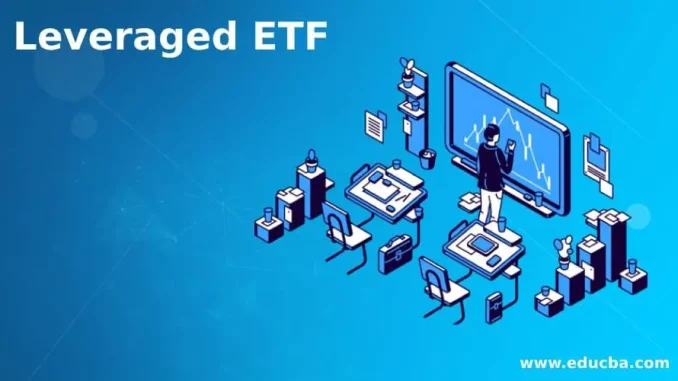
Leveraged ETFs are powerful financial instruments designed to deliver 2X or 3X the return of an underlying index. But they are also by nature risky, and should not be bought on a whim.Light Total reader This article points out the good side and bad side for leveraged ETFs, offering useful advices to borh new and experienced. investors.
Benefits of Leveraged ETFs
This is one of the attractions of leveraged ETFs. A x2 leveraged ETF will go up by two points when a index rises one point, a x3 leveraged ETF will go up three times, and so on. This applies to traders who chart short-wave fluctuations in the market for daily profit.
Short-Term Trading Opportunities:
Leveraged ETFs can be used in short-term trading strategies, rather than being retained over long stretches. Traders can exploit the increased daily market fluctuations to earn a swift profit. For day traders and swing traders, these instruments offer a way of gaining significant returns in a relatively short time.
Hedging:
Investors can use leveraged ETFs as an antidote for their portfolios, such as buying an inverse leveraged ETF when the market is bear.To this end, they shield the portfolio against risk on the downside.
Liquidity and Accessibility:
Leveraged ETFs are traded on major stock exchanges, which means they have good financial liquidity and prove very convenient for investors. An investor can buy and sell shares in these ETFs just like any other stocks, without margin accounts.
Diversification of Trading Strategies:
Leveraged ETFs cover a wide range of indices, sectors and asset classes. This allows investors to mix their investment strategies in various markets with improved results.
The Cumulative Effect:
The cumulative effect is one of the biggest risks facing leveraged exchange-traded funds, or ETFs. Given that these funds are designed to achieve their target over just one day, is it any wonder when long terms go haywire and returns actually end up sharply different? When markets are highly mobile, such an effect is even more sharp. High volatilty: Leveraged ETFs naturally have greater market volatility than ordinary ETFs. Greater returns may be the result, but at the same time this also means keeping their risks large. Investors must be prepared for the possibility of such things happening.- Decay over time: Leveraged ETFs are not meant for long-term holding. The daily resetting of their leverage will cause these funds to decay over time and produce losses even when their underlying index is performing very well.
This phenomena is most obvious in a one-way trading market.- Complexity and misconceptions: Leveraged ETFs are complex tradable financial instruments which may be easily misinterpreted by novice investors. An incorrect understanding of these funds can result in surprise loss if it leads to investors actually trading them.
Traders considering their operation before dealing must have a sound knowledge of how leveraged ETFs work. Increased Costs: Leveraged ETFs often come with a higher expense ratio than traditional ETFs in the same sector. The costs associated with rebalancing and a daily reset of leverage will erode potential returns, especially for investors who hold these ETFs over an extended period of time.
Relative to traditional ETFs, these investments can help you multiply profits while also serving as a safe investment in case volatility takes place. Therefore some investors might be more inclined to buy them for only this reason alone., but they also have their own risks; for example, “decay” of volatility and great potential losses.
Therefore, the most experienced investors who can monitor their capital with the dogged determination to profit are the most suitable. For an all-round analysis and comparison to your own investment targets and risk tolerance, now you can make use of leveraged ETFs.
If you have experience doing so that is. And also look at how it long-term leverage affects your own risk/return trade-off in case you were ever tempted to make a trade like this off-hand, some afternoon. Then plan accordingly with the results for avoiding being burnt wholly; plan how to avoid them as well.